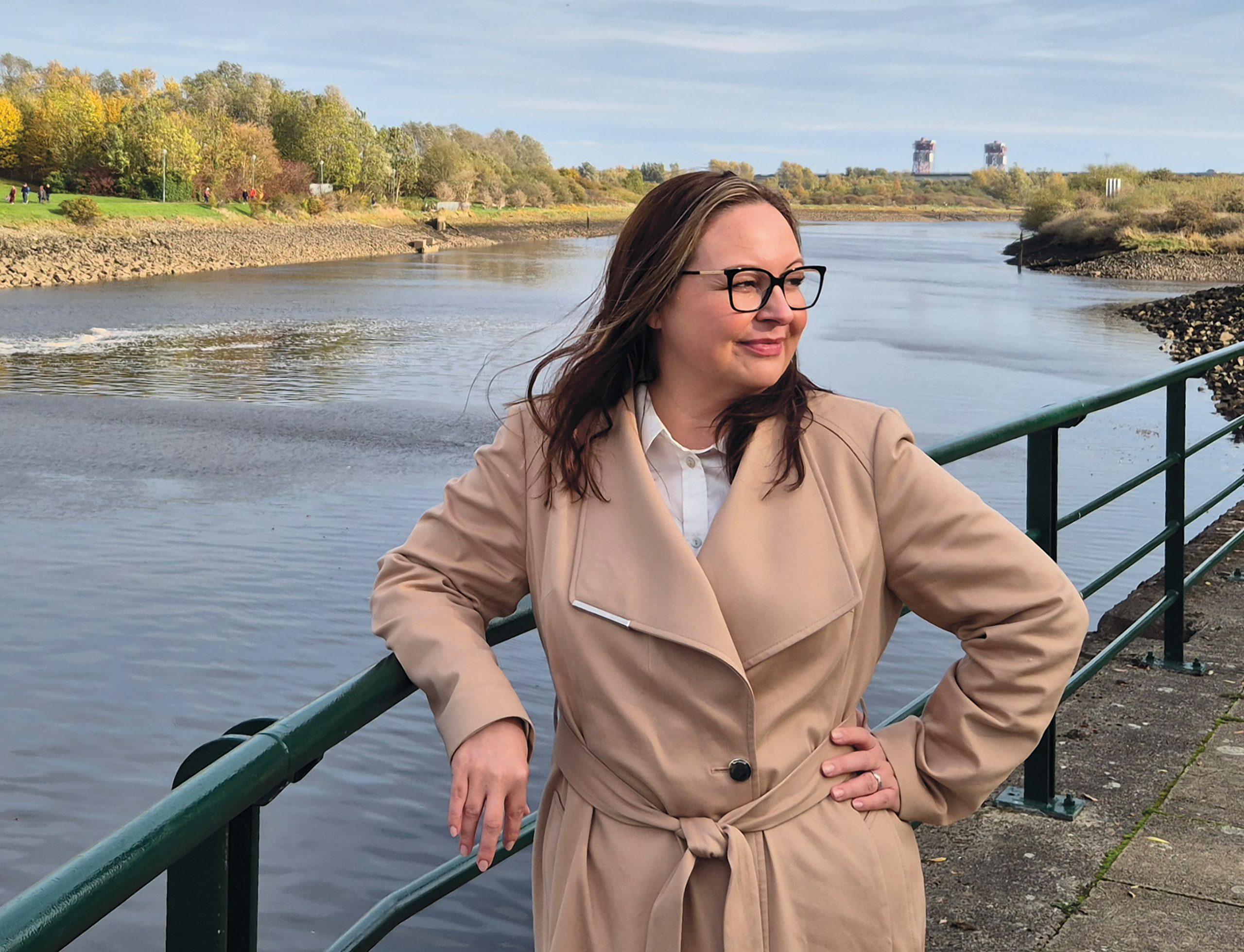LinkedIn: Tees Maritime
Tell us a little about Tees Maritime and its overarching mission.
Tees Maritime was founded earlier this year by industry leaders from local maritime businesses, with support from the Department for Transport and Maritime UK.
The idea was simple: give Teesside’s maritime community a single and united voice.
Our job is to strengthen the ecosystem, connecting business, education and the Government so that investment, innovation and skills flow together.
We’re not chasing growth targets or ticking trade boxes; what drives this is pride – in the river, the people and the graft that built this place.
The Tees built the ships, the steel and the livelihoods that carried Britain’s economy, and our job is to make sure that sense of purpose doesn’t fade.
As you say, Teesside has a rich marine heritage. How is Tees Maritime helping lay foundations for the area to thrive across future generations?
Not long ago, almost everyone you knew worked in one of two industries – steel or chemical – which were generational roles yours the day you were born.
So it’s fantastic to see SeAH Wind building big things from steel again, for example.
That sense of regional pride and identity matters; it reminds people this place still makes things that move the world.
We’re an island nation.
Everything we build, trade, import or export depends on people and skills in the maritime industry.
It’s the great enabler of growth, yet too often it’s been hidden in plain sight.
Too much of our talent leaves because they don’t realise what’s on their own doorstep, and we’re determined to change that.
So far, we’ve launched a range of education and skills programmes, from primary schools to college students and the youth board.
The goal is simple: to help young people see where they fit, and to show them the river isn’t just part of the landscape, it’s part of their future.
With major investors such as SeAH Wind anchoring themselves on Teesside, how is Tees Maritime harnessing that momentum?
The arrival of SeAH Wind has put Teesside firmly back on the global map.
They’ve recently joined the cluster and are supporting the Freeport Futures programme we’ll be running with Middlesbrough College from November onwards.
When a company of that scale commits here, it sends a clear message about the region’s capability and ambition.
Our job is to make sure that momentum lands locally – that SeAH Wind can find Teesside suppliers, that schools understand what kinds of jobs will exist and that the skills pipeline meets the opportunities being created.
We’ve now got everyone from AV Dawson and PD Ports to Sembcorp, British Steel and Casper Shipping in membership, along with the likes of Middlesbrough College, Ward Hadaway and Clean Slate Solutions.
That mix of operators, service providers and educators is exactly what a healthy cluster should look like – joined up, ambitious and proud of the place it calls home.
Tees Maritime hosted the North East Coastal Powerhouse Summit 2025 in early November.
What does that event say about its influence?
The summit is our flagship event – 120 delegates, two panels and a room full of the people who make things happen.
We heard from SeAH Wind, PD Ports, AV Dawson, Tees Valley Combined Authority, NZIIC, the Royal Navy and the Northern Powerhouse Partnership, alongside Government and industry leaders from across the UK.
The fact those conversations are being led from Teesside says a lot about how far we’ve come.
For too long, decisions about the coast were made inland.
The summit brings the focus back to where the work actually happens – at the ports, on the river and in the yards.
The region’s coastal and industrial strength gives us an edge in national growth, trade and decarbonisation.
But we must shout about it.
Tees Maritime is part of the Maritime UK Cluster Network.
How significant is that alliance?
It’s important.
We’re working closely with the Government to help them connect trade, skills and industry policy with the sectors that actually deliver them.
Maritime underpins everything from clean energy and construction to logistics and exports.
So, if policy overlooks us, it overlooks trade itself.
Our job is to make sure that doesn’t happen.
Being part of the cluster network means we’re in the room when national decisions are made and also lets us share what works here with other regions.
For example, we’ve submitted a proposal to Skills England and the Department for Education to make maritime the UK’s next foundation apprenticeship, written in Teesside for national rollout.
How important is collaboration with local industry, education and the Government to Tees Maritime’s long-term success?
Without collaboration, there is no cluster.
We’re funded by the Department for Transport until March 2026, after which we’ll be entirely membership funded.
The first half of the year has been about proving what’s possible when the region comes together.
The next is about legacy.
We’re already working with Tees Valley Combined Authority and others to explore ways of keeping that momentum going, making sure projects around skills, education and opportunity don’t lose pace when the initial funding ends.
For me, it’s about keeping local talent here and making sure Teesside leads the country in what comes next.
Collaboration is how we do that.
What are your ambitions for Tees Maritime over the coming years?
Tees Maritime has already shown what can happen when industry takes ownership of its future.
But if we want that impact to last, we need everyone who believes in this region to play their part.
Membership isn’t about meetings and logos, it’s about keeping this work going together.
The maritime industry has always been the backbone of Teesside.
It deserves the same ambition and respect as any growth sector.
If we can keep giving industry a voice, giving young people a reason to stay and reminding everyone what this river still makes possible, then we’ll have done something worth passing on.
November 18, 2025
- Business & Economy

